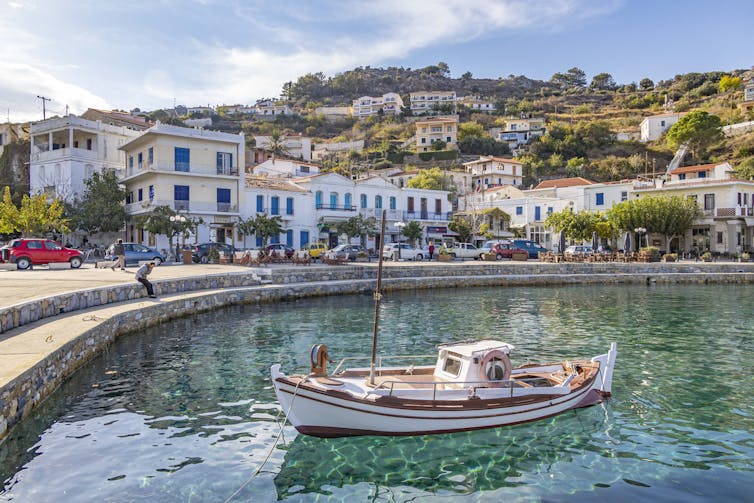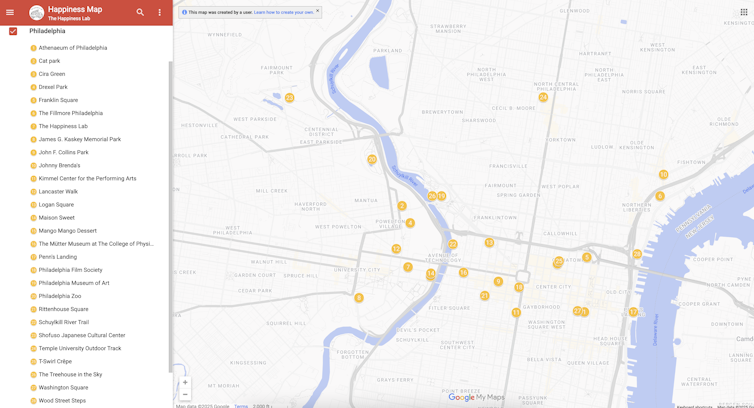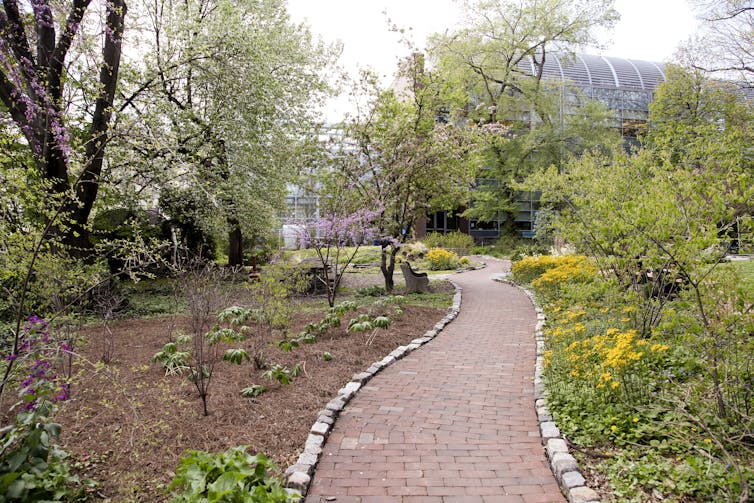My Laughing Place
In the old days of Summer my panic would be starting to set in because a third of summer vacation would be over already. God help the poor kids today, they only get two months, so it's HALF over for them. There may be some disagreement, and I'm certain of nothing, but when I started at Cove School back in September 1941, our Bay District Summer Vacation was four months, which I ya ya ya'd at my Pensacola first cousins, who went to school nine months to our eight.
All that has been said here before and not been contested. I'm thinking of May 8 as a day Summer Vacation started one glorious Summer eighty-some years ago.
Bubba was not an enthusiastic student. Summer Vacation was my Happy Place, and Christmas Vacation second happiest. The notion of MLP, My Laughing Place didn't come to me until "Song of the South" came to the Ritz Theatre and I watched Brer Rabbit tricking Brer Fox and Brer Bear out of roasting him on a barbecue spit over a hot fire. Brer Bear was the stupid one, Brer Fox was as sly as you imagine, and hand-rubbing, lip-smacking evil its very self.
But MLP, My Laughing Place. If only I'd thought to name one earlier, maybe I'd have enjoyed the second half of my Navy twenty as much as I did the first ten. Or coped more successfully with the evil spirits I encountered, as does every priest, in my churches in Harrisburg, Apalachicola, PC, and out at the Beach. But MLP didn't come to me until Norman Hair died, and Bill Lloyd, and my Mother, and I repaired to that cedar tree down across WBD right on the Bay. It became and was MLP, My Laughing Place, where I could begin to recover from Life. We left there December 2014, and actually it's only just recently that I realize 7H Porch very early dark mornings has become MLP. You have to be in a place of beauty that you love so much it consumes your heart.
7H Porch, I loved it even after the hurricane those months when the trapezoids were up and there was a toilet sitting out here while interior repairs were made. That toilet out here on 7H porch always reminded me that my grandparental roots included an aunt's house up in Grand Ridge that I used to visit with Mom and Pop, where all those years a new toilet sat on the back porch as a sign that as soon as someone got round to installing it, and the plumbing it required, they would be moving up in the world. It never happened,
but I remember the dining room table groaning with dozens of dishes the Sunday noons we were there for Sunday dinner. I did stop helping myself to one pork dish once I got a bite of hairy pig skin.
I loved my grandparents more than even I can imagine. A grandparent could hope to be remembered that lovingly.
Anyway, it's Saturday afternoon. After early hours hot & black on 7H porch, I had coleslaw with chicken thigh meat cut up in it for breakfast, a slice of American and a slice of cheddar cheese for lunch, a bit of Oregon pinot noir to sip on this afternoon, and Linda has prepared a beautiful salad for supper. Life is Good: hoping you are the same.
RSF&PTL
T89&c
| |
|
Philly psychology students map out local landmarks and hidden destinations where they feel happiest
What makes you happy? Perhaps a good night’s sleep, or a wonderful meal with friends?
I am the director of the Happiness Lab at Drexel University, where I also teach a course on happiness. The Happiness Lab is a think tank that investigates the ingredients that contribute to people’s happiness.
Often, my students ask me something along the lines of, “Dr. Z, tell us one thing that will make us happier.”
As a first step, I advise them to spend more time outside.
Achieving lasting and sustainable happiness is more complicated. Research on the happiest countries in the world and the places where people live the longest, known as Blue Zones, shows a common thread: Residents feel they are part of something larger than themselves, such as a community or a city.
So if you’re living in a metropolis like Philadelphia, where, incidentally, the iconic pursuit of happiness charge was ratified in the Declaration of Independence, I believe urban citizenship – that is, forming an identity with your urban surroundings – should also be on your list.
Misinformation is the problem, and The Conversation is a solution

Safety, social connection, beauty
Carl Jung, the renowned Swiss psychoanalyst, wrote extensively about the relationship between our internal world and our external environment.
He believed that this relationship was crucial to our psychological well-being.
More recent research in neuroscience and functional imaging has revealed a vast, intricate and complex neurological architecture underlying our psychological perception of a place. Numerous neurological pathways and functional loopstransform a complex neuropsychological process into a simple realization: I am happy here!
For example, a happy place should feel safe.
The country of Croatia, a tourist haven for its beauty and culinary delights, is also one of the top 20 safest countries globally, according to the 2025 Global Peace Index.
The U.S. ranks 128th.
The availability of good food and drink can also be a significant factor in creating a happy place.
However, according to American psychologist Abraham Maslow, a pioneer in the field of positive psychology, the opportunity for social connectivity, experiencing something meaningful and having a sense of belonging is more crucial.
Furthermore, research on happy places suggests that they are beautiful. It should not come as a surprise that the happiest places in the world are also drop-dead gorgeous, such as the Indian Ocean archipelago of Mauritius, which is the happiest country in Africa, according to the 2025 World Happiness Report from the University of Oxford and others.
Happy places often provide access to nature and promote active lifestyles, which can help relieve stress. The residents of the island of Ikaria in Greece, for example, one of the original Blue Zones, demonstrate high levels of physical activity and social interaction.

Philly Happiness Map
I asked my undergraduate psychology students at Drexel, many of whom come from other cities, states and countries, to pick one place in Philadelphia where they feel happy.
From the 243 student responses, the Happiness Lab curated 28 Philly happy places, based on how frequently the places were endorsed and their accessibility.
Philadelphia’s founder, William Penn, would likely approve that Rittenhouse Square Park and three other public squares – Logan, Franklin and Washington – were included. These squares were vital to Penn’s vision of landscaped public parks to promote the health of the mind and body by providing “salubrious spaces similar to the private garden.” They are beautiful and approachable, serving as “places to rest, take a pause, work, or read a book,” one student told us.
Places such as the Philadelphia Zoo, Penn’s Landing and the Philadelphia Museum of Art are “joyful spots that are fun to explore, and one can also take your parents along if need be,” as another student described.
The Athenaeum of Philadelphia, a historic library with eclectic programming, feels to one student like “coming home, a perfect third place.”
Some students mentioned happy places that are less known. These include tucked-away gardens such as the John F. Collings Park at 1707 Chestnut St., the rooftop Cira Green at 129 S. 30th St. and the James G. Kaskey Memorial Park and BioPond at 433 S. University Ave.

My students said these are small, unexpected spots that provide an excellent opportunity for a quiet, peaceful break, to be present, whether enjoyed alone or with a friend. I checked them out and I agree.
The students also mentioned places I had never heard of even though I’ve lived in the city for over 30 years.
The “cat park” at 526 N. Natrona St. in Mantua is a quiet little park with an eclectic personality and lots of friendly cats.
Mango Mango Dessert at 1013 Cherry St. in Chinatown, which is a frequently endorsed happiness spot among the students because of its “bustling streets, lively atmosphere and delicious food,” is a perfect pit stop for mango lovers. And Maison Sweet, at 2930 Chestnut St. in University City, is a casual bakery and cafe “where you may end up staying longer than planned,” one student shared.
I find that Philly’s happy places, as seen through the eyes of college students, tend to offer a space for residents to take time out from their day to pause, reset, relax and feel more connected and in touch with the city.
Happiness principals are universal, yet our own journeys are very personal. Philadelphians across the city may have their own list of happy places. There are really no right or wrong answers. If you don’t have a personal happy space, just start exploring and you may be surprised what you will find, including a new sense of happiness.
See the full Philly Happiness Map list here, and visit the exhibit at the W.W. Hagerty Library at Drexel University to learn more.
Read more of our stories about Philadelphia.
https://www.youtube.com/watch?v=cKJvnNNC354


